be seen. be heard. be known. belong.
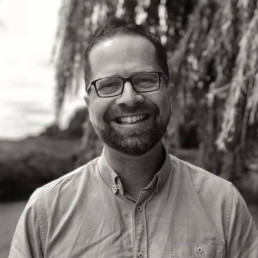
Written by Matthew Savage
Former international school Principal, proud father of two transgender adult children, Associate Consultant with LSC Education, and founder of #themonalisaeffect.
I am increasingly of the opinion that every piece of policy and practice in our schools should intentionally centre, and be grounded in, both the pursuit of #deij and putting and keeping #wellbeingfirst. These are, for me, the two golden threads of education.
Consequently, and necessarily, all of the work I do with schools across the world is interwoven with these threads at all times. This is why my mission, as we step into a new academic year yet burgeoning with possibility, has been adapted fully to reflect this.
It is too easy for us to be distracted by other, competing priorities, forgetting that to have too many priorities is to have none. Therefore, now seems as good a time as any to revisit and reset our own.
I believe that every single member of each school community has a fundamental, inalienable and unconditional right to “be seen, be heard, be known and belong”. And I believe that it is my duty to embed and protect that right in everything I do.
We must each be seen for every intersecting identity that makes us who we are, throughout every stratum of what I call the ‘5 Cs of visibility’ – communication, curriculum, campus, climate and culture. We can, and must, audit this, in order to make sure it happens.
We must each be heard, and listened to, honestly, openly, actively and often, so that our voice, and the collective voice of our communities, inform and infuse the decisions that our made on our behalf. Student, staff and parent voice initiatives need to be authentic and systemic.
We must each be known, not for the masks we wear, thickly and well, but for the messy bundle of pains and passions, pasts and futures, needs and strengths we inhabit when not trying to comply, conform or perform. This is where data – hard and soft, cold and warm, satellite and street – must play a part.
And if, and only if, we can each enjoy each of these three things, whether we be parent, staff or student, can we begin to belong, a vital, valued and vocal part of our school. And if we belong, then we can begin to thrive, for it is when thriving that the holistic outcomes, of individuals and of teams, are optimised.
As an educator, as a leader, what will you do this year to help ensure every single member of your school community be seen, be heard and be known, in order that everyone can truly belong?
The Anti-Racist Journey of a Secondary School in Manchester
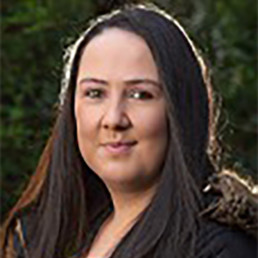
Written by Laura Morris
Laura Morris (@MissMorrisManc) is head of RS and Citizenship at a secondary school in Gorton, Manchester, with additional whole school responsibilities for SMSC and anti-discrimination. She has been teaching for 15 years. Her website is MissMorrisManc.co.uk.
Before the Black Lives Matter mobilisation of 2020, and all that followed, staff at the school I work at in Gorton, Manchester, would largely have felt positively about the work we were doing to celebrate our students, myself included. We went all out for Black History Month every year with relevant lessons across departments and external visitors invited in (as showcased in this video from October 2019), we had very few complaints of racist incidents from the students, and some work had been undertaken to decolonise the curriculum, particularly in subjects like RS, Citizenship, History and Geography. We could pat ourselves on the back for a job well done!
With all the work we’ve done since, and the huge changes that have been made, I now feel embarrassed to reflect back to pre-2020 when I thought we were already doing enough for our students. We weren’t.
Before we broke up for summer this year, I wrote a report detailing what we’ve done so far with the hope it could give ideas to other teachers and save them some time if they are starting from scratch. It’s been a process of trial and error and, while we’re still far from perfect and keen to collaborate with other schools to help us further improve, I am confident that we are now having a much more positive impact on our students in making them feel seen, appreciated, safe and loved.
In this blog I will summarise the most important parts from the report for people who are keen to improve the anti-racist practice in their school.
Named members of staff
Towards the end of the 2020-21 academic year, my colleague Ben Wilson was given a TLR to focus on anti-discrimination work in the academy and I was made associate assistant head with the same priority, which I realise puts us in a very fortunate position. Our head teacher included this anti-racist work as an objective in the school improvement plan and believed it was necessary to appoint people in posts to achieve our goals. I can’t stress enough how important it is for all schools to be willing to give time and money to staff doing this work and can only hope the example from our school will help other teachers feel confident to take similar proposals to their head teachers.
Staff groups
If I had to single out the most impactful elements of our process, it would be the staff and student groups. So many changes have been made but it’s hard to think of anything we’ve done that didn’t first come from conversations held in these spaces.
I realise how lucky I am to work alongside enough people who recognise the institutional racism present in education and were prepared to give up their time to do something about it, and that’s how the anti-racist working group (ARWG) was formed in September 2020.
We created sub-groups, each taking responsibility for a different area that we decided needed to improve, like the behaviour system and reporting incidents of discrimination, student voice, the curriculum, and staff CPD.
If you don’t feel as though you’ve got enough members of staff with the interest or time capacity to take on this work, there is no need to panic, as it is the students who have guided so much of what we’ve achieved. They are the experts and are invaluable to bringing about change.
Student voice
Student meetings started in early May 2020 during lockdown on Zoom with organisations like Kids of Colour (who still lead student meetings half-termly) and The Black Curriculum, and continued informally during lunch times when we returned to school the following academic year. It became clear how important it was for our young people to be given time to talk about their experiences of racism both in and outside of school.
At the start of the 2021-22 academic year we interviewed Year 11 students for anti-discrimination ambassador roles. They decide the agenda for the separate fortnightly KS3 and KS4 meetings, which are held during the 30-minute form time slot, lead the discussion, and, while I am in the room (to take back any pressing concerns to the ARWG), the ambassadors take responsibility for the meetings. Students discuss their personal experiences outside of school, what they believe needs to change in school, and anything that is going on in wider society that they would like to talk about. Any students who don’t feel comfortable reporting incidents of discrimination to teachers can go to the ambassadors who then feed back the details to Ben or me.
One of last year’s anti-discrimination student ambassadors said: “I feel like having this space for students is really important because we come together as a community to discuss issues that really matter to us and we think of ways to resolve it and deal with it.”
We have an annual anonymous anti-racist student survey, to help us identify issues that may be affecting students who don’t attend the meetings, and the student groups have delivered assemblies in response to the feedback to educate all students on discriminatory behaviour they might knowingly or unknowingly be perpetuating.
Towards the end of the 2020-21 academic year, Year 11 students wrote down examples of times that staff had said or done racially or culturally insensitive or offensive things. I recorded them reading out the statement of another student, to ensure anonymity, and played the video to staff during a CPD session.
Hearing the accounts woke up so many members of staff to the experience of the students, which has meant that all the work that has followed, that has resulted in an extra time commitment for pretty much everyone working in the academy, has been easier to achieve. There’s little room to question or complain about the need for change when you have student testimony to support the cause.
Discriminatory incidents
Discussion in the student groups highlighted the need for us to better deal with incidents of discrimination between students. Racism was very rarely reported but feedback from the student groups revealed this was down to the students feeling as though nothing would happen as a consequence, either because they had reported something in the past and hadn’t heard how or if it had been dealt with, or their belief that it wasn’t a priority for staff.
Ben created a reporting system (that you can read about in more detail in the report), which was trialled at the end of the 2020-21 academic year and put in place the following year, which has currently significantly increased the workload of staff who deal with behaviour incidents. But it has also meant we are in a much stronger position to educate and sanction students involved in discriminatory behaviour, as well as validate the feelings of, and bring resolution to, the victims. Different forms of microaggressions are the most commonly reported incident and students have responded incredibly well to the educational sessions they attend with Ben or me as a consequence. Victims are given the opportunity for a restorative conversation, once pre-restorative work has taken place with both students, and they almost always choose to take up this offer in the process.
The number of repeat offenders is minimal, if not close to non-existent. But the number of reported incidents has increased. Students now have the confidence in the school to respond appropriately to accusations of discrimination.
As one of last year’s ambassadors put it: “when I look back at when I was in Year 9, if someone said something racist to me I would just go home and cry. But now I would feel empowered enough to report it and I hope younger students feel that way too.”
Curriculum changes
All subject leaders completed The Key’s anti-racism curriculum review document, which identified areas for improvement for departments already on the journey of decolonising their curriculum and served as a fantastic starting point for teachers who didn’t know where to begin.
After being given department time to plan and create new resources, we’ve had a carousel format for whole school CPD sessions to share these across departments. Most departments now have a member of staff with an objective in their appraisal relating to diversifying their curriculum. During the carousel CPD we have a ‘speed dating’ format where staff spend a few minutes listening to the changes each department has made, and having discussions on the impact and any possible cross-curricular links, before moving on to the next department.
We recognised the need to better signpost these changes to students. Bennie Kara delivered a bespoke CPD session for our staff last December where she suggested posters to be placed around school. Now every classroom has a subject specific poster highlighting content relating to race (as well as sexuality, gender and religion) in our curriculums. Before breaking up for summer, subject specific PowerPoints were shown to all students too so they knew what to expect in the year ahead. Examples of what we teach can be found on our school website.
For more details on the processes above as well as other initiatives we’ve implemented, check out the report in full. Feel free to reach out to me on Twitter too!
Building a Multi-Faith Space

Written by Hollie Panther
DEI Lead, Mental Health First Aider, secondary Science & Psychology teacher and Teach First Ambassador.
Experiences of, and learnings from, establishing a space for prayer and celebration of religious diversity in a secondary school.
The last school I worked in had a majority non-religious student population, but a diverse spread of religions among those who did follow a faith; many religions had just one follower within the student body. A parent of one such student had mentioned that they were uncomfortable being open about their faith due to the amount of discrimination they’d received in the past. As D&I Lead, a large part of my strategy to improve religious inclusion in the school was to open a Multi-Faith Space. When I started, there was no designated place to pray; my previous school did have a prayer room, but it was hidden away and only students or staff who asked about it were encouraged to use it. I wanted to create a space that people from all religions could use, so that it would encourage some sense of community, which I thought those who were the solo followers of their faith within the school might’ve been lacking. I also wanted it to be a place of celebration and curiosity, so that any student could learn about diverse faiths if they wanted to. The space was initially opened as a work-in-progress during Ramadan, to give Muslim students a place to pray and be away from food if they needed it. During this time I also designated a toilet block for Wudu, the practice of washing before prayer, and delivered whole school talks educating students about Ramadan and how to support students who were fasting. Feedback from this was unsolicited and overwhelmingly positive — parents of Muslim pupils wrote in to the school to congratulate and give thanks for the ‘exemplary inclusion effort for Ramadan’; my wish is for this approach to Ramadan to become the norm in all schools, so all pupils can celebrate the diversity of religious practices alongside one another.
Working alongside the Multi-Faith Space was the Religion & Spirituality Society, which I established as a student-led club who met at lunchtime to explore and learn about various religions. The leaders of the society planned activities and presentations for the group, and brought in occasional themed snacks too — I’m hoping the society will meet in the Multi-Faith Space going forwards, to ensure they are surrounded by diverse religions, with the opportunity to learn about them being easily accessible.
The Multi-Faith Space is two small rooms off of the Library, where I have put up shelves on each wall and designated each of the six walls to a major world religion (Christianity, Islam, Judaism, Sikhism, Hinduism, Buddhism). I reached out to religious leaders in the community to see if they would be happy to donate a copy of their religion’s text or any artefacts that could go on the shelves. This took the form of finding email addresses of local Mosques, Churches, Gurdwaras etc, or filling in contact forms on their website, and Googling ‘free copy Jewish, Hindu, Buddhist etc text’, and making sure in my message I invited them to send my request on to anyone else they thought might be able to help out. As a result of this I had an incredible array of items gifted to the Multi-Faith Space by several local religious groups, and had an insightful and useful meeting with the representative of Judaism from the West Sussex SACRE (every county council have representatives of world religions, who are keen to come into schools to deliver lessons / assemblies etc on their religion, I’m hoping the next D&I Lead and teachers of RE will be able to make use of this otherwise untapped source after my introductions — none of the RE teachers in the school had heard of them). Several sources of items and books posted them to me or dropped them in to the school, but I also visited several organisations to collect their donations, which I really enjoyed, as it took me to places I wouldn’t have ordinarily visited within my local community.
I organised a Grand Opening for the Multi-Faith Space to which I invited all the local contributors, as well as staff and religious students. The student leader of Religion & Spirituality Society was invited to cut the ribbon; it was a great opportunity for me to connect up school staff and the pupils who will be running the Religion & Spirituality Society next year with community religious leaders (over donuts and cookies), so that they are able to lean on them for support with the society and also with RE teaching as the school grows. One community attendee at the Grand Opening came from the Baháʼís, a religion I admittedly hadn’t heard of when they initially made contact, but which I learnt much about through talking to this local follower at the event. They also donated several items and books to the Multi-Faith Space, and though they didn’t have a designated wall and shelves, I set up a table in the space to display their information, and was really glad to be representing a greater diversity of faiths than I had originally planned for.
I had a student volunteering with me for their Duke of Edinburgh’s Bronze award, who helped me plan the space and also worked in the Design Technology (DT) room on a signpost to go outside of the Multi-Faith Space, which featured laser-cut arrows, each one with a different place of worship on it — ‘Hindu Mandir’, ‘Sikh Gurdwara’ etc. Unfortunately, because the student could only work on this under supervision by the DT teacher, due to technology issues and absence, the sign was not finished in time for the Grand Opening — I look forward to seeing photos of it in pride of place when it’s completed in the Autumn term.
My advice to anyone thinking about building such a space would be to absolutely go for it — the only spend was on the shelves and snacks for the Grand Opening, as well a couple of items to represent religions who didn’t get back to me to contribute anything. The rest was furniture that was already in the school, and the items and books gifted by the religious community were invaluable — so it’s doable on a tiny budget, I would just encourage anyone wanting to build one to start early, and get your message with the call for help / donations really clear and send it to as many people as possible, ideally alongside an invite to a Grand Opening — and then chase them up if they haven’t replied; I got the impression that everyone wanted to help, but that sometimes there are multiple people within a place of worship who read the emails, so they may not get picked up the first time around.
On the whole, I really enjoyed building the Multi-Faith Space and I’m really proud of what I achieved with this — the Grand Opening was on my penultimate day working at the school, so it really feels like a legacy I’m leaving behind; a tangible asset to the school community that will continue my work without me.
Representation, Challenges and the Importance of DEI in Schools
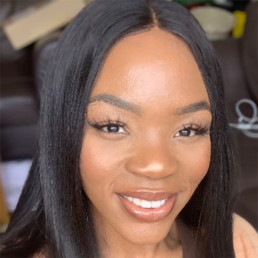
Written by Taiwo Bali
Taiwo Bali writes education updates, teaching tips and well-being related content for secondary school teachers.
From receiving hate mail to leading a booming community that celebrates all people, Hannah Wilson has shown her commitment to DEI. She sat down with Beyond Digest to share why she believes DEI is essential in all schools.
Hannah Wilson is a leadership development coach and trainer with a passion for Diversity, Equity and Inclusion (DEI) in education. She is the Co-founder of #DiverseEd, an organisation dedicated to tackling issues faced by underrepresented communities and furthering DEI in schools.
Her former roles as a Secondary English Teacher, Head of Secondary Teacher Training and Founding Executive Headteacher allowed her to develop rich expertise in education. Hannah kindly spoke to Beyond Digest about her journey with DEI and the importance of diversity in schools.
Q: What sparked your passion for diversity and inclusion?
H: As a student doing GCSE English I was indignant about the lack of diversity in the curriculum. It just never sat right with me. I was exposed to postcolonial literature at university and learned about topics such as diversity in social justice during apartheid and the caste system in India. It was really interesting for me to look at literature in that way and also the critical theory around it. So when I trained to be an English teacher, I guess I just brought that into my teaching and into my curriculum design because I worked in quite challenging schools. I worked in a boys’ school in Kingston, I moved to an academy in Mitcham and then an academy in Croydon. I’ve taught really diverse students and I think when I’m looking to see whether they see themselves in the displays and in the library, in the curriculum, you can see the disengagement because they can’t.
Q: What has being a DEI ally taught you?
H: As I’ve been promoted, I’ve thought about what I can do in my roles as a curriculum leader, pastoral leader and headteacher to help affect change. When I co-founded #WomenEd we had lots of conversations about gender representation, but quite quickly, the feedback from the network was that it felt like it was white feminism as opposed to true feminism because it was a group of white women predominantly talking about it. At events, I put myself in a room with all black teachers, talking about their experience of education and headship. At that moment my bubble got popped and my own privilege got checked. Even as someone who felt quite aware of some of those issues, I discovered a whole trench load of information that I didn’t know. That’s when the need to diversify the organisation became the top priority.
Q: As someone who ran a school, why do you think it’s important to have a diverse SLT?
H: I have worked in six different schools and the SLT and governing bodies never represented the children. When I left London and then moved up to Oxford to be a headteacher, I recruited a very diverse team because I care about diversity. I recruited a diverse SLT because I knew it was going to be part of our school culture, policy and practice. Diversity needs to be humanised so by having a visibly Muslim member of SLT who did assemblies about Ramadan and spoke to the children about his faith, he demystified and de-stigmatised what it meant to be Muslim. He educated the children and their parents on his faith. We also had openly gay and bisexual members of staff which supported young people who were exploring their own sexual orientation and allowed parents and carers in same-sex relationships to feel accepted. Visible representation and role modelling made the children, parents and fellow staff feel safe.
Q: How important is it for young people to see diverse staff?
H: I worked in schools with 55% black boys and there were no black men on the governing body. For me, there needs to be that mirror, there needs to be a reflection of the children we are teaching and the communities we are serving. Young people need to be able to see themselves in the staffing, leadership and governance. There’s great irony in a young person walking through their school and not seeing themselves. I have done talks at heads conferences where quite often, people think their school is more diverse than it is. You may have diverse adults in the building but what job are they doing? Are staff from underrepresented groups in positions of power and can they influence decision making? What messages are the children receiving about their future prospects and opportunities to succeed? We tell young people they can be anything they want but we implicitly cap their potential by not being intentional about who is appointed into which role. We can’t say one thing in assembly and then on staff recruitment day, do something completely different. Young people have got to see it to be it.
Q: What challenges have you faced in championing DEI?
H: After moving to Oxford, I think my team and I were all a little bit shocked that the DEI work we were doing in schools in London, Reading and other parts of the country felt really alien in this part of the world. I got quite a lot of pushback because they weren’t quite ready for it. The challenge came from the people in the wider community. We had parents and carers who chose not to send their kids to our school because they didn’t want their kids to go to a school where there were LGBTQIA+ posters in every classroom. I had parents say to me, your school is beautiful, I love your vision for education, take those posters down and I’ll send my kids to your school. It didn’t sit right with us so we kept them up. This was part of our school culture and ethos. We were committed to creating psychological safety and a sense of belonging for all children. It all kicked off when one complaint from a parent ended up in the local media and the story went from regional to national. There were nasty comments from a popular newspaper’s readers and 3000 comments in a local Facebook group and I even received 86 letters threatening my life. DEI brings the worst out of people sometimes.
Q: How did the negative press impact the DEI work you do?
H: People get loud, defensive or just spew hate because they think their actions will stop you. If anything it made us even more committed to the work because it showed the ignorance and lack of empathy in some people. I do a lot of work talking about values and ethics and for me, remaining committed to DEI is ethically the right thing to do. My values drive this work. Though advised not to, I wrote a blog post to address the negative press because I didn’t want to be silenced as a woman. I didn’t want to be silenced as a school because we were committed to this work. The blog went viral. I think we had about 14,500 thousand hits and I got a lot of disclosures from other heads and school leaders around the country who had been in a similar situation and were happy I spoke out.
Q: Where can schools get DEI training?
H: After the death of George Floyd schools needed to do something about DEI but didn’t know how to get started. Everyone in my network was looking for training. DEI is very overwhelming because it touches every single policy and practice. You don’t know what you’ll find out about your school until you start looking. It is a difficult and emotionally draining journey to go on and schools need support. The #DiverseEd website is a one-stop-shop for all aspects of DEI training. We use the directory to signpost specialists so if schools need anti-racism, menopause awareness or gender identity training they can find the best trainers. #DiverseEd now works with 185 organisations that are tackling DEI all over the world. We also offer toolkits and reading lists based on different aspects of DEI for schools to use.
The #DiverseEd community continues to grow. Last year they held its first virtual event (June 2020) which had a reach of 13,500 people from around the world, who joined for 5 hours on a Saturday morning to listen to all things DEI. The next free event will be held virtually on the 22nd of January 2022. Find out more here.
Hannah and her friend Angie Browne have also joined forces to create a programme to help schools navigate DEI. Both former headteachers use their expertise in headship to offer paid leadership training courses in governance training, SLT training and diversity masterclasses. The training covers topics ranging from inclusive language to curriculum development and now has 20 cohorts of leaders, which is a testament to the value they offer.
DEI should be an integral part of every school. Having a safe learning environment that celebrates diversity and raises aspirations is something all young people deserve. How does your school tackle DEI? Share your thoughts with me via Twitter.
Find Hannah @Ethical_Leader and #DiverseEd on Twitter and #DiverseEd via the website.
‘There was no one left to speak out for me’

Written by Matthew Savage
Former international school Principal, proud father of two transgender adult children, Associate Consultant with LSC Education, and founder of #themonalisaeffect.
Over the past week, most of the candidates for the leadership of the UK government have been seeking power in part through rabidly attacking an already marginalised and vulnerable group, in scenes reminiscent of some of the most repugnant moral panics in the darkest corners of history.
Every day, my two adult trans kids wake up to a world whose media and politicians render their very existence problematic, dangerous and contingent. This week, along with the hundreds of thousands of other trans and non-binary people in the UK, they are especially under attack.
In order to help my children, and an entire community, gain and retain protected access to the very same things you would wish for yourselves and your family – the right to be, love, and be loved unconditionally – I would like to invite you to consider some of the following steps:
🏳️⚧️ LEARN: In a time where lies run rampant, read and discover the truth about trans identity and what it means to be trans or non-binary today. I provide training for schools across the world on this, and I am happy to signpost resources on any possible question you might have too.
🏳️⚧️ LISTEN: Listen to the voices of trans and non binary adults and young people. Here is a very powerful, short film which makes this point far more powerfully than I can: bit.ly/3yHxGJ2. And listen to my podcast, “Jack and Me”, on Apple (apple.co/3HI5SXA), Spotify (spoti.fi/3MqC3OU) or wherever you get your podcasts.
🏳️⚧️ CHALLENGE: Once you have listened and learned, be brave enough to challenge and inform others. This is where the most potent activism happens – in everyday conversations. This is where minds are changed.
🏳️⚧️ ADVOCATE: Speak truth to power. Our government and our media need to be held to account. And give voice to the voiceless. There are lots of ways we can do that, from letters to petitions, and in the very choices we make.
I believe that our country is so much better than this. I believe that, in years to come, we will look back at this time with the same horror and shame with which we remember the provenance of Section 28.
But I also believe that the only way that the benevolent many can drown out the noise of the hateful few is if we do not stay silent. In this, I am reminded of Niemöller’s 1946 poem:
First they came for the Communists
And I did not speak out
Because I was not a Communist
Then they came for the Socialists
And I did not speak out
Because I was not a Socialist
Then they came for the trade unionists
And I did not speak out
Because I was not a trade unionist
Then they came for the Jews
And I did not speak out
Because I was not a Jew
Then they came for me
And there was no one left
To speak out for me
Please stand with me, and speak out for my two children too – because #TransRightsAreHumanRights. 🏳️⚧️
Tackling Sexism in Schools Needs to Start with the Curriculum

Written by Rachel Fenn
Co-Founder of End Sexism in Schools and former Head of English.
End Sexism in Schools (ESIS) is a grassroots campaign organisation set up in 2020. Our aim is to support girls and boys to fulfil their potential, without gendered expectations, in a safe and supportive school environment.
Over the past two years, numerous scandals have revealed the widespread extent of sexual harassment, sexism and misogyny in schools, with Ofsted’s 2021 report into this commenting on how boys have a sense of ‘superiority’ that makes them feel they can treat girls as they wish. The answer to this has been to overhaul the PSHE curriculum to explicitly teach consent, but we know that this is merely treating the symptoms, not the cause.
The reality is that women are virtually invisible within the content of the academic curriculum, and we draw a direct line between this invisibility, and the sexual harassment boys inflict on girls. Without ever hearing women’s voices, reading and discussing women’s experiences, and learning to value and respect women’s contribution to the world, is it any wonder that boys grow up viewing women as inferior, and worthy of little respect?
When our founder first made this connection and began to campaign to change the curriculum, she was met with a problem: she had no concrete evidence to back up her claims. Research into the content of the curriculum in secondary schools was limited, and little proof beyond anecdotal evidence was available to demonstrate the extent of the problem. As such, ESIS’s first project was to uncover gender bias in the teaching of English Literature at Key Stage 3 (school years 7-9) in England’s schools. English was chosen due to it being a core subject studied by all pupils to the age of 16, and it being straightforward to identify gender bias in the curriculum content by collating data on the sex of authors and protagonists on set text lists.
In 2021, using a small army of volunteers, we researched the English curriculum in nearly a third of England’s secondary schools. With no requirements to teach any specific texts other than Shakespeare, schools have free rein to teach what they like at Key Stage 3. Given this freedom, the lack of diversity we uncovered is shocking. Our key findings are as follows:
- 82% of novels taught feature a male protagonist
- 77% of schools teach one or no whole texts by female authors across the three years of KS3, with 44% teaching none at all and 33% only teaching one; this is out of an average of nine whole taught texts across the three years
- However, the actual number of whole novels taught by female authors is likely to be even less because a larger percentage of male authored texts were mandatory (as opposed to being on a list of choices) than female – 68% compared to 57% respectively
- 99% of plays taught are by male writers, only 1% by female, and only 2% have a lead female protagonist
- A small number of schools account for the majority of female-authored texts taught; 16% of schools teach 50% of those listed in school curricula
Coupled with the fact that only 7% of pupils study a book by a female author at GCSE, this means that most children educated in England will go through their entire compulsory education never having studied a whole text (as opposed to an extract, poem or short story) by a female author. Considering that schools have free choice of the texts they teach, and that 77% of secondary school English teachers are female (the highest proportion of any academic subject), the fact that most are continuing to fall back on the teaching of male authored texts with male protagonists is powerful evidence of how engrained misogyny and patriarchal values are embedded in our society.
English is just the tip of the iceberg; the invisibility of women is evident in every area of the academic curriculum, and it is our mission as an organisation to carry out the research required to prove this, and then campaign for change. PSHE cannot continue to be touted as a panacea for solving misogyny in schools when every other lesson pupils attend teaches them that women have no value. Cultural change will only happen when the academic curriculum is overhauled to create an equal space for women’s achievements, voices and experiences alongside those of men.
You can read our report into the English curriculum here. If you’d like to join our efforts to End Sexism in Schools, we are always looking for new volunteers. Please do contact us at endsexisminschools@gmail.com.
Education DEI Calendar 2022-23

Written by DiverseEd
Diverse Educators started as a grassroots network in 2018 to create a space for a coherent and cohesive conversation about DEI. We have evolved into a training provider and event organiser for all things DEI.
We know that it is really hard to keep on top of all of the awareness and celebration days, weeks and months to include in the school calendar!
We also appreciate that it is equally difficult to know when to schedule/ host a DEI event without causing an unintentional clash or how to find out what DEI events are happening.
So we are proposing a work-in-progress solution which will evolve and grow as others contribute to it to co-create a comprehensive resource to make all of our lives a little bit easier…
The Education DEI Calendar 2022-23 is a draft – it is not perfect, it is not complete and it is in no way trying to exclude any key dates! Please bear that in mind as you review it and share solutions instead of problems if there are things you would like to suggest we add/ change as it evolves.
At the moment it captures lots, but not yet all, of the key dates from the following free resources which we signpost to people in our network:
- The CIPD Inclusion Calendar 2022
- The Dual Frequency Diversity, Equality and Inclusion Calendar 2022
- The Inclusive Employers’ Diversity and Inclusion Calendar
- The James Wants to Know You Diversity Calendar
- The NAHT Equality, Diversity and Inclusion Calendar 2022
- The NHS Diversity, Equality and Inclusion Events Calendar 2022
We have collapsed lots of these dates into a spreadsheet to make it more educator-friendly – so that you can filter by month, week, day and date to see what is going on. (You could also copy and paste it alongside your school calendar or your school’s assemblies schedule to cross-reference where themes are being explored).
We have not yet added all of the religious and cultural days as this will probably need another column as there are so many dates to be aware of. This will be the next layer of detail so keep checking back as it evolves over the summer break ready for the new academic year and start of term.
Note that when there is more than one theme on any given day/ week/ month we have sorted them by A-Z so that there is no perceived hierarchy. Also that when an awareness week is split across two weeks we have shifted it to the week it falls in the most.
Remember that you always have creative license to make these dates work for you, your school and your community – for example, some themes might need an awareness assembly before it falls on the calendar, others may require a celebration event following a key date. Consider how to streamline how many of the dates you want to mark so that it does not create overwhelm for staff nor students.
We have highlighted the weekends for all of the grassroot networks who host DEI events – the idea is that organisations in our network will be able to edit/ add dates of events with contact details and links to register/ book a ticket.
Do help us grow and improve the Education DEI Calendar 2022-23 by making suggestions and giving us feedback here. We hope you find draft 1 helpful to get you started!
Three Employee Rights Workers in Graduate Roles Should Be Aware Of

Written by Lance Craving
Freelance Content Producer and Researcher
Having graduated from university and/ or your teaching training pathway, now’s the time to apply your newfound knowledge to your first teaching role in the big wide world of work. Whilst this is an exciting time, it’s also a chapter of your life that involves lots of apprehension and perhaps anxiety around taking the next step.
There will be so many new challenges, and suddenly you’ll have to contend with all of the responsibilities that come with any form of employment. To make the transition a little easier, it’s essential that you are aware of your employee rights and any obligations your employer will have towards you, so you know what to expect. These may change as you undertake different roles, but for graduates, here are three things you need to know when starting your new job.
Written terms and conditions
If you have gone straight from school to university to a teacher training pathway, there’s a chance that your entry position in the school system could be your first experience of employment. If this is the case, you’re likely to be unfamiliar with employment contracts, so it’s vital that you familiarise yourself with what should be included in yours. If you’re ever unsure, speak to family members, student services or senior members of staff at your school to ensure nothing has been missed out, and you’re not being unfairly treated.
You may not have necessarily received anything in writing pertaining to your employment status, but there will still be a contract in place. The contract will detail all of the rights and obligations both yourself and your employer have to one another during your term of employment. It is important that you keep a copy of the contract to hand, to prevent any disputes further down the line.
Pension contributions
If you’ve just finished studying, chances are you won’t be worrying too much about your pension contributions – it’s a long time until you’ll see them again, after all. But even in the early stages of your career, it’s worth considering how you want to approach your pension payments, since the earlier you start, the longer you’ll have to save up for your retirement.
Most teachers who are working in state schools will be automatically enrolled into the Teachers’ Pension Scheme. This was set up to help secure the financial future of those working to educate the younger generations, but the scheme underwent a major review in 2015 which could affect what you’re entitled to. Be sure to check which terms apply to you to prevent any confusion further down the line.
Rest breaks
Whilst a teacher’s daily timetable will be structured slightly differently to a standard 9-5, you are still entitled to lunch and break times like workers in any other profession. As the amount of break time teachers have varies from school to school, you can expect to see your employer’s expectations outlined within your written contract.
Under the UK Government’s School Teachers’ Pay and Conditions Document (STPCD), teachers are entitled to at least one break every teaching day for a “reasonable length” of time. This typically equates to 20 minutes (but it can be more), which is often taken between 12pm and 2pm.
Why We Need Anti-Sexist Language Resources in the Curriculum
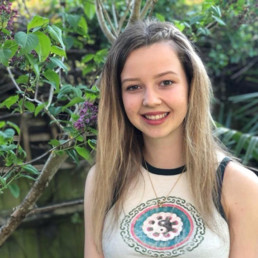
Written by Sophie Frankpitt
Applied Linguistics undergraduate at the University of Warwick
A culture of sexual- and gender-based violence is being enacted through our words. But we still aren’t listening – and we still aren’t talking about language.
In June 2021, the government published a review of sexual abuse in schools and colleges. It showed us that sexual- and gender-based violence is rife, and that girls are disproportionately affected. The figures were stark, but for many of us that did not come as a surprise. What came as a surprise for me is that – as far as I’m aware – no-one pointed out that most of the sexual harassment was perpetrated through language.
I’m a Linguistics undergraduate, which means that studying language is what I do. Ever since the review was published, I’ve spent days rereading it, trying to work out how to articulately say that this survey shows us how important language is. It is through working with Our Streets Now for the last few months that I have been able to work out how to say what I think needs to be said.
The review stated that 92% of girls thought sexist-name calling happens a lot at school, and 80% thought that unwanted sexual comments are a regular occurrence. Other recent studies have also shown us that sexual- and gender-based violence are often perpetrated through language. For example, in 2018, Plan International reported that 38% of girls experience verbal harassment at least once a month. This is likely to be higher amongst women of colour and those in the LGBT+ community. In the National Education Union’s (2019) study, over a quarter of teachers hear sexist language daily at school. On Our Streets Now media, the campaign against Public Sexual Harassment, you can see various testimonies that explain the effects of verbal (and other) harassment.
You might say that sexist language is the least of our problems, and that we should be dealing with things like physical harassment. But sexist language establishes a conducive environment for sexist behaviour. It enacts and builds a culture in which sexual- and gender-based violence is standard. This means that, by using and hearing sexist language, a culture of sexual- and gender-based violence is normalised. There are many, many studies that have shown the detrimental effects of sexist language on wellbeing. And this is why language is important.
Part of the reason language is powerful is because it shapes our worlds often without us even realising. Within our words lie our values, our beliefs, and our identities. Because of this, language has a massive role to play in the fight for gender equality.
The first step is recognising how important language is – and thinking and talking about it much more than we currently do.
Secondly, we can incorporate teaching about anti-sexist language use into the curriculum. Our Streets Now currently has – and is working on – resources for schools that examine the role language has to play in combatting Public Sexual Harassment. The resources educate about Public Sexual Harassment, ranging from topics like being an active bystander to recognising victim-blaming narratives.
And finally, we can make Feminist Linguistics more mainstream. Language affects all of us, so it’s damaging to keep it confined within academia. Every day and for everything, we use language – so we should all understand the power that words hold. There are a few resources that can help us to learn a bit more about language. I’d recommend starting with the blog language: a feminist guide, taking a look at Our Streets Now’s website, and learning about feminists (such as Chimamanda Ngozi Adichie, Amanda Gorman, Laura Bates –Every Day Sexism and many more) who use language to empower, uplift, and educate.
Conversion therapy is a safeguarding issue for educators
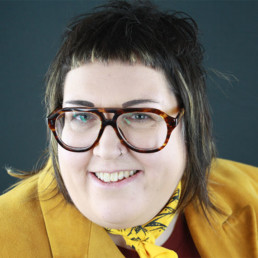
Written by EJ-Francis Caris-Hamer
Mx EJ-Francis Caris-Hamer is a PhD student at the University of Essex within the Department of Sociology. Ze has worked, as a qualified teacher, within the education sector for 20 years, working in both 11-19 sector and Higher Education.
I woke up this morning to read the news that a leaked document shows the government decided to U turn on their commitment to ban conversion therapy. In 2018 the conservative government pledged to ban the practice (Government Equalities Office, 2018) and this was confirmed in the Queen’s speech in 2021 (ITV News, 2022). My heart truly sank hearing this news because it felt as though the U turn was a decision based on political interests rather than an evidence-based health decision (Cramer et al, 2008; Independent Forensic Expert Group, 2020). Fast forward to the BBC News, 46 minutes ago, the updated stance reads that the conservative government now does plan to ban conversion therapy practices in England and Wales for sexual orientation identity, but will remain legal for transgender identities (BBC News, 2022).
What is Conversion Therapy (CT)?
Conversion Therapy (CT) is also known as ‘Cure’ therapy or ‘Reparative’ therapy. It is any “form of treatment or psychotherapy which aims to change a person’s sexual orientation or supress a person’s gender identity” (Stonewall, 2021). These therapies are both unethical and harmful to the person undergoing such treatment and have been condemned by the World Health Organisation and NHS (The Guardian, April 2021) and the United Nations in June 2020 (Stonewall Survey, 2020).
Why is CT a safeguarding issue for educators to be aware of?
The charity Galop surveyed 5000 LGBTQIA+ people in February 2022. They found that 1/3rd of those surveyed suffered abuse from a relative due to their sexual orientation and/or gender identity and for 2/3rds this started when they were under the age of 18, worryingly 30% were under the age of 11 (Galop, 2022). If you identify as trans or non-binary, you are more likely to be subjected to abuse (43%). Abuse includes verbal threats, harassment, facing threats or actual homelessness, and even physical violence. 5% reported relatives subjecting them to conversion practices and the statistic increases to 11% if the person identified as trans or non-binary. Thus, it is essential that the government should also include gender identity when considering a ban of CT.
As educators, it is essential to have an awareness of these statistics and practices, just as we perceive FGM, we should be perceiving the findings from Galop and CT practices as coercion and abuse. As Leni Morris, CEO of the charity Galop, states:
“Anti-LGBTQIA+ abuse from family members is often misinterpreted by statutory services as ‘generational differences’ or having ‘different values’ rather than seeing it for what it is really is – domestic abuse” (Brooks, 2022).
Thankfully and rightly so, today we would never accept such justifications in relation to domestic violence. We need to consider Anti-LGBTQIA+ abuse in the same sense.
What can we as educators do to support young LGBTQIA+ people?
As part of safeguarding, we need to demand from school leaders the time and space to understand the potential harm that families and CT practices can cause the students we teach. We need to recognise the signs of students who could be vulnerable. It is important to recognise that identifying as part of the LGBTQIA+ community is not a safeguarding issue per se, but Anti-LGBTQIA+ abuse including CT practices is a safeguarding concern and the harmful impact it has on students. Even more importantly, students need to be empowered to spot the signs for themselves, or their peers (in support of the ‘no bystander’ agenda). This can only be achieved through awareness.
As a PhD researcher addressing queer inclusion in education, I have heard stories of teachers explaining how students have been threatened with CT by their parents or other authority/guardian figures. As a qualified teacher myself, I also recognise the time constraints that educators have when trying to find the time to research and become increasingly aware of the issues surrounding abuse for LGBTQIA+ young people. As a result, I attach two resource documents as a starting point:
Document one – This is for all staff working in education. This document is to inform you regarding the impact of CT practices and support organisations for young people. This document can be used to inform you as an educator to discuss with students and can be converted into a CPD session under the umbrella term safeguarding.
Document two – Lesson plan which can be delivered to students as part of PSHE/RSE and Citizenship. This increases their awareness and helps them to maintain safeguarding for themselves and their peers regarding CT practices. As educators, we should be campaigning to ensure that such lessons are taught within PSHE.
Sometimes to ensure effective safeguarding practices, we have to embrace our roles as trailblazers, reaching beyond the limitations of current legislation. The right thing to do is always the right thing to do.
References:
BBC News (2022) Conversion Therapy: Ban to go ahead but not cover trans people. Available: https://www.bbc.co.uk/news/uk-60947028 Accessed: 01/04/2022.
Brooks, L. (2022) Third of British LGBTQIA+ people experience abuse by relatives. The Guardian. Available: https://www.theguardian.com/world/2022/apr/01/third-of-young-british-lgbtq-people-experience-abuse-by-relatives Accessed: 01/04/2022.
Cramer, R.J. Golom, F.D. LoPresto, C.T. Kirkley, S.M. (2008) Weighing the Evidence: Empirical Assessment and Ethical Implications of Conversion Therapy, Ethics & Behavior. 18(1), 93-114. DOI: 10.1080/10508420701713014
Galop (2022) LGBTQIA+ Experiences of Abuse from Family Members. Available: https://galop.org.uk/resource/lgbt-experiences-of-abuse-from-family-members/ Accessed: 01/04/2022.
Government Equalities Office (2018) LGBT Action Plan. Available: https://assets.publishing.service.gov.uk/government/uploads/system/uploads/attachment_da ta/file/721367/GEO-LGBT-Action-Plan.pdf Accessed: 27/09/2021.
Independent Forensic Expert Group (2020) Statement on Conversion Therapy. Journal of Forensic and Legal Medicine. 72 Available: https://reader.elsevier.com/reader/sd/pii/S1752928X20300366?token=8C9A2BA4EA68E779A55552541F25EF74A6AC11D3BD64468097DE1C0B9C2A010FAA1064483ABF807884D555610390F27B&originRegion=eu-west-1&originCreation=20220402095216 Accessed 01/11/2021.
ITV News (2022) Exclusive: Government ditches ban on conversion therapy, according to leaked document. Available: https://www.itv.com/news/2022-03-31/exclusive-government-ditches-ban-on-conversion-therapy-leaked-document-shows Accessed: 01/04/2022.
Stonewall Survey (2020) Conversion Therapy and Gender Identity Survey. Available: www.stonewall.org.uk/system/files/2020_conversion_therapy_and_gender_identity_survey.pdf Accessed: 08/09/2021.
Stonewall (2021) Conversion Therapy. Available: www.stonewall.org.uk/campaign-groups/conversion-therapy Accessed: 07/09/2021.
The Guardian (April, 2021) Why are gay conversion practices still legal in the UK? Available: www.theguardian.com/news/audio/2021apr/02/why-is-gay-conversion-therapy-still-legal-uk Accessed: 07/09/2021.

